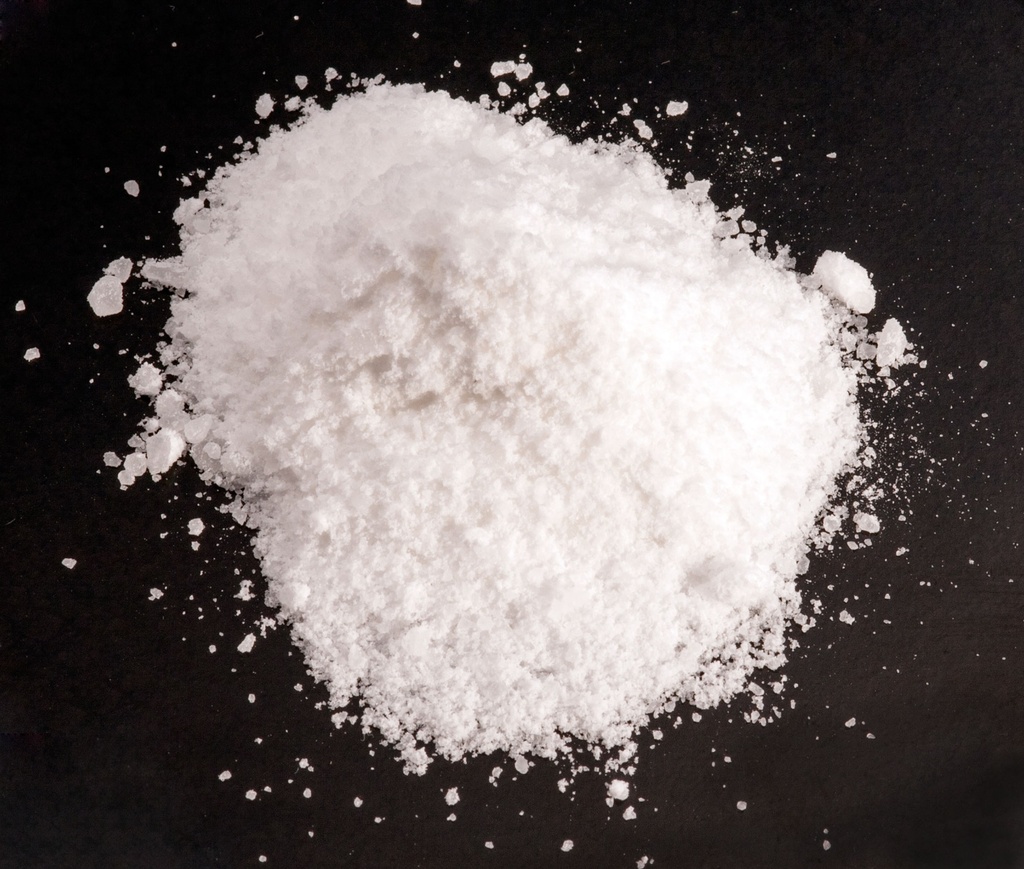ALUMINIUM SULPHATE, barrel, 25kg
Valid Article
ALUMINIUM SULPHATE powder
Definition
Coagulant used for treating turbid water. Coarse crystallic powder, possibly in lumps. Usually supplied in bags, can also be supplied in plastic barrels. Unit of measurement: 1 kilogram. Used in water treatment in particular in the coagulation - flocculation process.
Synonym
Cake aluminium, Pickle aluminium, Filter aluminium, Papermaker's aluminium or Pearl aluminium.
Specifications
Solid small granules of Aluminium Sulphate. Exists as well in (big) lumps, but these will have to be crushed in order to become dissolvable in water to form a 1% stock solution. These are white crystalline granules. They have the following properties:
hydrated/ octadecahydrate | |
CAS number | 10043-01-37784-31-8 |
Chemical formula | Al2(SO4)3 |
Concentration | 17 - 18% |
Solubility in water | 86.9 g/100 ml at 0 °C |
Stability | stable |
Corrosive | May corrode metals in the presence of moisture |
Instructions for use
Treatment of water
Normally used prior to chlorination of water, as a part of a process to reduce raw water turbidity: Aluminium sulphate solution is added to the raw water in a circular or onion-shape sedimentation tank, or for direct rapid sand filtration with the Water Treatment Unit. Assists sedimentation / rapid sand filtration through coagulation. Store in dry conditions. Mostly used in stock solution of 1%).
Choosing the correct coagulant depends on the raw water's pH. See in book "Public Health Engineering in Precarious Situations", MSF, 2nd edition, 2010, for more information, or contact your WHS technical referent if in doubt.
Certain water analyses should be made before using Al2(SO4)3: certainly pH (range of use: 6.0 till 7.4), turbidity, and preferably also conductivity, alkalinity (pH buffer effect) and temperature.
For treating turbid water, a 1 % stock solution (or "mother solution") is used (10 g/litre).
This is made by diluting 10 x (100/18) = 56 g Al2(SO4)3 granules (18% concentration) into 1 litre of water. The Al2(SO4)3 granules will dissolve completely, although this might take some time and effort (e.g. shaking vigorously the solution's recipient).
The stock solution should be kept in an airtight, non-metallic container.
A jar test will have to be performed to determine the dosage needed. Transparent 1 litre beakers are ideal as the formation and finally the settling of flocs will be very visible. The quantity required for this small volume can then be extrapolated according to the volume of the big sedimentation tank or to the flow of raw water which is pumped into the sedimentation tank or through the Water treatment Unit. Once all flocs have settled (this takes several hours) or when the water has passed the Water Treatment Unit, it still needs to be chlorinated in a separate reservoir.
Attention: Residual Aluminium might provoke certain health risks if sedimentation times are too short and/or if the dosage is not correctly performed. Thus a residual aluminium test is strongly recommended and should preferably be under 0.2 mg/l.
For information on preparation of coagulation solution and its jar test, see:
"Public Health Engineering in Precarious Situations", MSF, 2nd edition, 2010:
- T.B. 2.14 Coagulants / flocculants
- T.B. 2.15 Jar test for coagulants
For information on water treatment methods based on coagulants, see:
"Public Health Engineering in Precarious Situations", MSF, 2nd edition, 2010:
- T.B. 2.16 Assisted batch sedimentation
- T.B. 2.17 Filtration methods
For information on water analysis to be done before and after the coagulant is used, see:
"Public Health Engineering in Precarious Situations", MSF, 2nd edition, 2010:
- T.B. 2.13 Turbidity measurement
- T.B. 2.22 Monitoring chlorination
Precautions for Use
Prepare solutions in non-metallic containers
Avoid inhaling vapour and dust when handling Al2(SO4)3 Al2(SO4)3.
Avoid skin and eye contact as the Al2(SO4)3 Al2(SO4)3 granules and solution are acid, thus aggressive. Personal Protective Equipment is advisable.
Never mix Al2(SO4)3 granules with anything else than clean water to prepare the coagulant solution.
Certain publications indicate that a high Aluminium concentration could provoke certain health hazards: chronic Encephalitis (neurological et psychological effects), kidney problems, potentially Alzheimer disease and malnourished children not picking up their weight.
Therefore there should be an aim of a very low residual Al concentration (max 0.2 mg/l) in the treated water.
Storage
- Store in a dry and well-ventilated place.
- Ensure containers are properly resealed after use.
- Store well under good storage conditions.
- Keep out of the reach of children
Waste management
Contact your WHS technical referent for disposal of expired or damaged batches of aluminium sulphate powder.
Signal Word
Danger
| H315 | Causes skin irritation |
| H318 | Causes serious eye damage. |
| P270 | Do not eat, drink or smoke when using this product. |
| P280 | Wear protective gloves/protective clothing/eye protection/face protection |
| P305 + P351 + P338 | IF IN EYES: rinse cautiously with water for several minutes. If the victim wears contact lenses, remove them if possible. Keep rinsing |
| P101 | If medical advice is needed, have product container or label at hand. |
| P102 | Keep out of reach of children |
| P103 | Read label before use. |
| P308 + P310 | IF exposed or concerned: immediately call a POISON CENTER or doctor/ physician |

